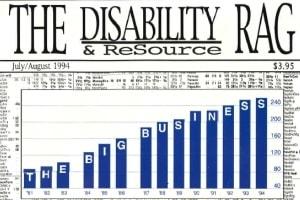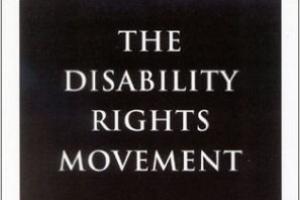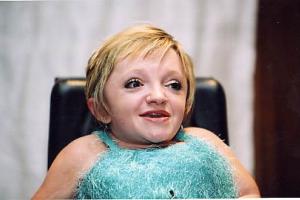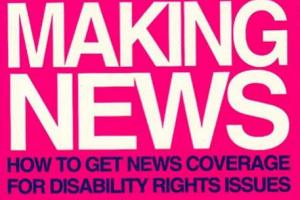
One person in seven experiences disability, yet the story of this community and its contributions is largely absent from the scholarly record. Disability in the Modern World: History of a Social Movement is a landmark online collection that fills the gap, with a comprehensive and international set of resources to enrich study in a wide range of disciplines from media studies to philosophy. The content is essential for teaching and research—not only in the growing disciplines of disability history and disability studies, but also in history, media, the arts, political science, education, and other areas where the contributions of the disability community are typically overlooked.
Key Disciplines
Interdisciplinary Focus
Never before have students and scholars across disciplines been able to observe and analyze so much content from the disability community in one place. The documents are indexed to make content easily findable for a variety of research and teaching applications, including:
War, Industry, and Technology
Technological and industrial changes during wartime have had a huge effect on the disabled. But while much attention has been paid to postwar economics and politics, research has yet to address how the forces of conflict have affected the disability community. Disability in the Modern World brings that balance, allowing users to examine the destructive effects of war-related developments in technology. The content reveals how society has responded over time, particularly as advances in medical treatment allow more of the war-injured to survive, but with significant physical and mental injuries.
Documents such as a 1943 Office of War Information press release entitled “Rehabilitation of Soldiers and Sailors” shows the debilitating effects of war on society. Students of veterans studies and military history can see how war has influenced the development of legislation and governmentally sponsored programs to support the disability community. Researchers can track how laws increasingly have encouraged advancements in disability aids, technological accessibility, and universal design. Soldier rosters showing the level of disability at the time of discharge reveal just how tremendously war has impacted the disabled.
The Media
Mass media have long helped determine how society talks about itself and the world—not always to our benefit. The media have been guilty of perpetuating stereotypes and underrepresenting the disabled. Disability in the Modern World now provides the tools to identify these wrongs. Periodicals developed within the disability community, such as The Disability Rag, will let users examine activities that led to changes in the media—from accessibility tools such as closed captioning to changes in the common language—letting students develop the skills necessary to critique mass media for prejudice and bias.
Advocacy and Rights
Activism and the work of disability rights organizations have not existed in a vacuum. Coalition building, internally and externally, has created the political momentum to effect legislation for inclusion and accessibility. Students of political science, race, LGBT studies, and Second Wave Feminism will learn about alliances among subsets of the disability rights movement, and with other civil rights movements, and will see how common strategies were critical for the passage of milestone legislation.
For example, during a 1973 protest over Section 504 of the Rehabilitation Act, members of the Black Panther Party publicly endorsed the civil protest and provided disability rights protestors with hot meals. Later, during the development of the Americans with Disabilities Act of 1990, members of the LGBT movement banded together with the Disability Rights Movement, defeating efforts that would have excluded people with AIDS. Disability in the Modern World will let students analyze these and other alliances of race, class, sexuality, gender, art, sports, theory, legislation, politics, and education.
Content Types: artwork, books, brochures and advertisements, comics, diaries and memoirs, documentaries, ephemera, essays, government/institutional documents, interviews, laws and legislation, letters, oral histories, pamphlets, performances, periodicals, photographs, posters, speeches, videos, and more.
Subjects and Key Word Searches: accessibility, blindness, civil rights, deafness, depression and World War II, education, employment, government programs and aid, hospitals and medical centers, laws and legislation, political demonstrations, rehabilitation, sign language, social activism and activists, transportation, veterans, wages and salaries, war, welfare and public relief, wheelchairs, and more.

Available here for the first time will be the complete digitized run of the The Disability Rag and its successor, The Ragged Edge. With its launch in 1980, The Disability Rag started a revolution—connecting isolated activists nationwide in what would become a growing, passionate community. At a time when the disabled had no control over their portrayal in non-disabled media, periodicals like The Disability Rag were the answer, fostering solidarity and community building among groups. From its first issue, The Disability Rag provides a lens through which the entirety of the disability rights movement’s history and challenges can be seen.

Following on the heels of other Civil Rights movements, disability rights laws emerged in the late 1960s and early 1970s. Often these laws were more symbolic than precise in terms of objectives and strategies for implementation of anti-discrimination policies. Policy refinement, the process of translating legislative mandates into strategies and procedures to govern administrative action, is both dynamic and controversial. This introductory playlist will explore the origins of the Disability Rights Movement, its intersectionality with other rights movements of the day, landmark legislation passed through its efforts, barriers and opposition it faced, and the continuing work done by activists and advocates.

With the advent of the Industrial Revolution, empire building, and world wars throughout the nineteenth century, military- and work-related casualties occurred more frequently, requiring governments to react to this growing population. Out of this age of war and industry grew vocational rehabilitation programs, workers compensation legislation, and technological advances, allowing veterans and injured workers a greater chance of returning to the workforce as productive members of society. Prior to the nineteenth century, a person’s value was determined by his/her ability to be productive and contribute to society, and people with disabilities were often considered sub-class, non-contributing members of society. Despite these initial advancements, it wouldn’t be until the development of the Disability Rights Movement in the 1960s where issues of equality, access, and independence would be addressed.

From Disability Media Australia, No Limitsis a frank and candid chat show that covers “everything you ever wanted to know about disability but were afraid to ask.” The show tackles a range of topics, from current events to sexuality, science, accessibility, and more. A contemporary production, No Limitsdocuments advocacy in action, tracing the evolution, role, and influence that the media can and do have. Featuring Australian activists such as Stella Young, Sara McQueenie, Phineas Meere, Naomi Chainey, and others, Disability in the Modern World includes seven seasons of No Limits from 2007 through 2013.

Despite the legislative victories seen over the past few decades, stereotyping people with disabilities is still common, and the mass media has played a role in perpetuating those stereotypes. Both through language and depiction, the media continues to focus on the medical model of disability: disability as an impairment, disability as something to be fixed, disability as a person’s sole identity. Disability culture aims at breaking down the perception of disability as tragedy or deficiency. By involving the disability community in the development of media programs, such as the periodical Disability Rag/Ragged Edge or Disability Media Australia’s chat show “No Limits,” which works to increase the visibility and involvement of people with disabilities in the media, as well as continued development of accessible programming and greater and more authentic portrayals of people with disabilities, the media actually can serve as a strong tool in combating disability stereotypes.